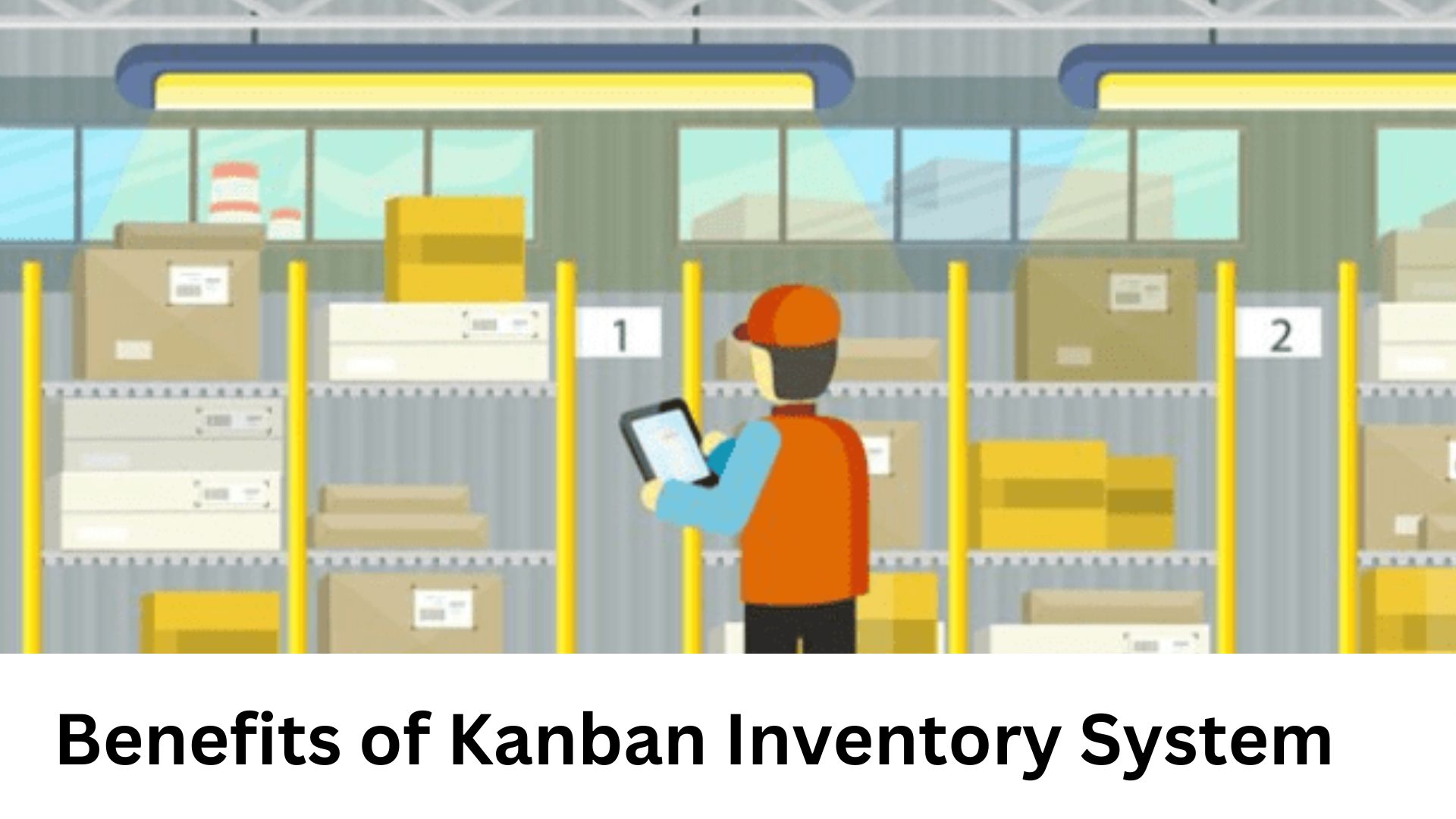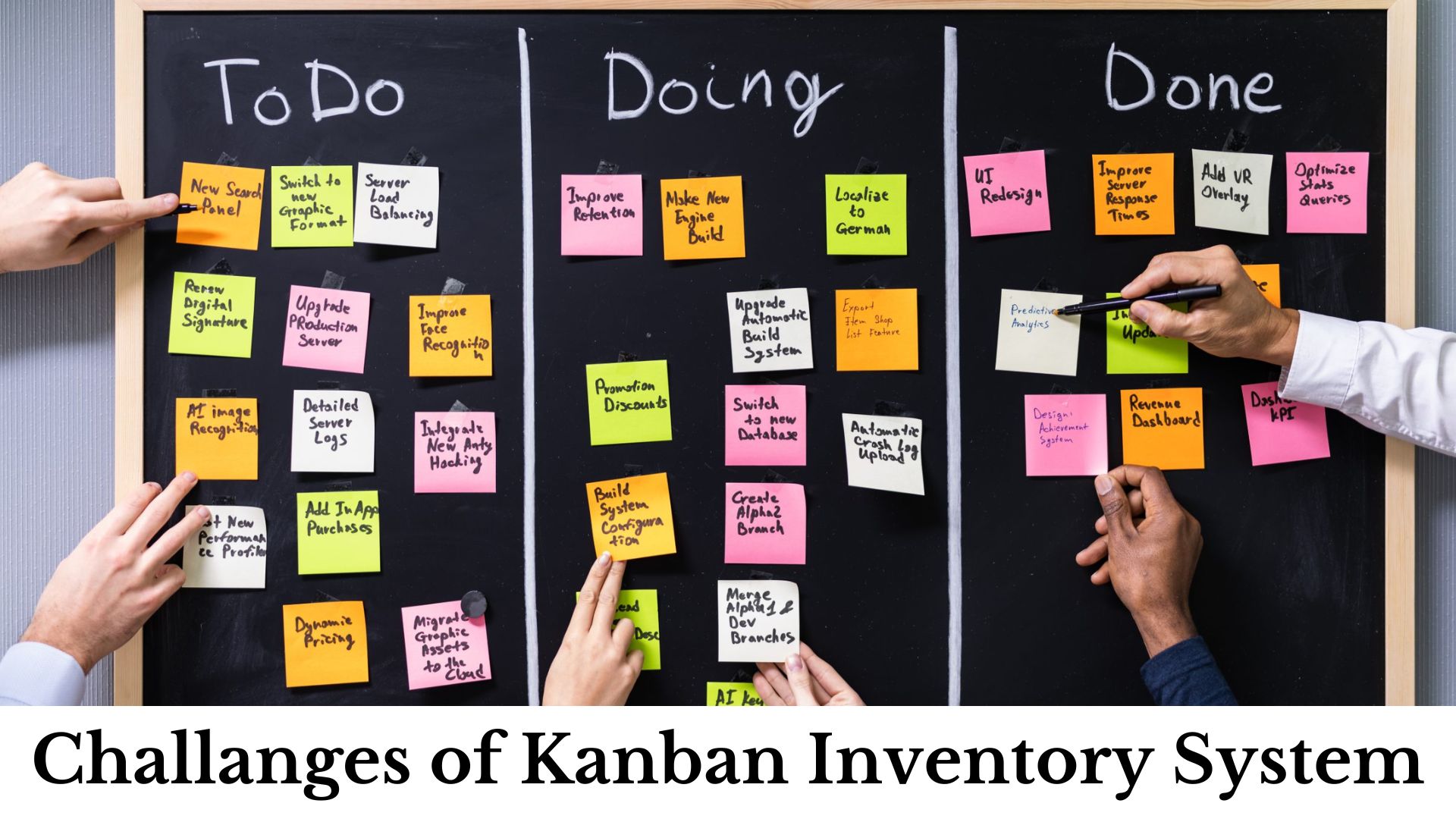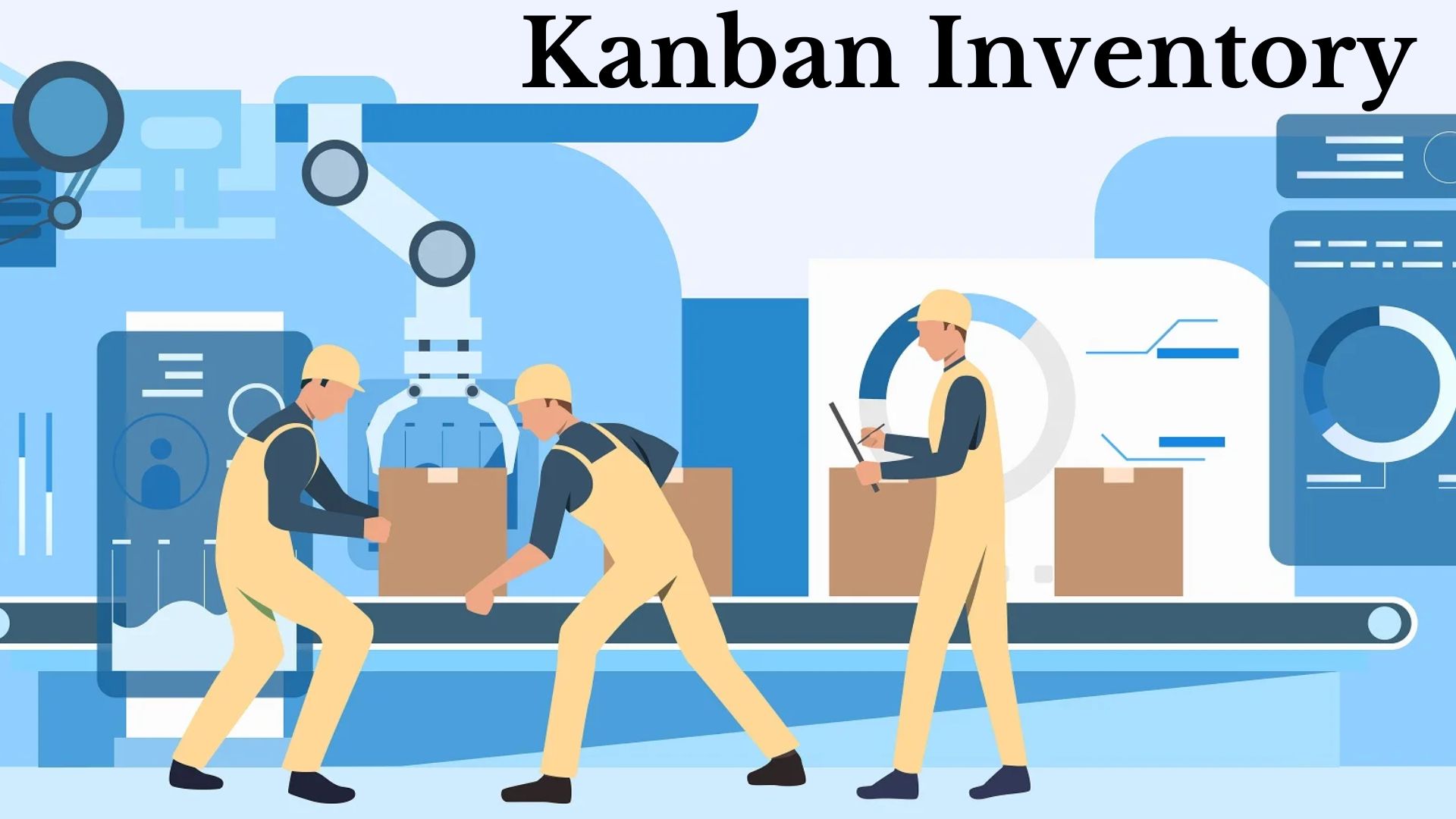Kanban Inventory Mastery: Efficient Workflow Guide 2024
Ever wondered how some businesses manage to keep their inventory in perfect balance, never running out of stock, yet never overstocking either? Meet Kanban, a Japanese-inspired inventory management system that’s been a game-changer for countless businesses.
It’s a simple yet powerful tool that’s all about visualizing work, limiting work-in-progress, and maximizing efficiency. Whether you’re a small business owner, an operations manager, or just someone interested in productivity hacks, understanding Kanban could be a boon for your professional life.
What do you Understand by Kanban Inventory?
To truly understand Kanban inventory, I delve deeper into the roots of its origin and explore the principles that govern it in inventory management.
The Origin of Kanban Inventory
Kanban originated from Japan, birthed by necessity within the manufacturing powerhouse, Toyota. The company, back in the early 1940s, faced challenges with inventory control, mirroring a mess of overstocking and stockouts. They discovered their solution in the supermarket model, where stores restock based on customer demand, not predictions. Mimicking this, Toyota developed an agile framework for managing inventory, known now as Kanban. A system where replenishment aligns intimately with consumption, limiting waste and promoting efficiency.
Kanban Principles in Inventory Management
In inventory management, Kanban principles represent guiding stars, steering systems towards optimization.
- Visualize the workflow: In Kanban, creating a visual representation of work in progress is critical. Through tools like Kanban boards, one can see the workflow’s state, improving transparency, and providing insights.
- Limit work in progress: Kanban encourages limiting the amount of work in progress. It becomes easier to focus on finishing tasks before starting new ones, reducing the time taken for each task to run its course.
- Manage flow: Regularly tracking, managing, and optimizing workflow ensures a smooth operation in the organizational process, minimizing disruptions and bottlenecks.
- Explicit policies: In a Kanban system, it’s important to define and communicate the process and policies explicitly. It facilitates understanding of the system and the responsibilities of the team.
- Feedback loops: Regular meetings and review sessions help to adapt and improve the system, ensuring it remains responsive to the team’s and the organization’s needs.
- Improve collaboratively, evolve experimentally: With a focus on continuous improvement, the Kanban system, though powered by regulations, thrives on innovation. The birth of ideas and the challenge of traditional methods push it, perpetually, towards becoming better, more efficient.
Each principle tightly intertwines with the one after and the one before, creating a cohesive set of guidelines that, when followed, can transform inventory management towards efficiency and effectiveness.
How Kanban Inventory Works
Delving deeper into the mechanics of the Kanban inventory system, it’s important to take note of three key steps: visualizing the workflow, limiting work in progress, and managing inventory replenishment. These steps offer a clear understanding of an optimal Kanban operation.
Visualizing the Workflow
Visualizing the workflow in a Kanban system involves creating a physical or digital board to track inventory status. It includes three columns labeled ‘To Do,’ ‘Doing,’ and ‘Done,’ corresponding to different stages in the inventory process. For instance, 100 items waiting to be processed are labeled ‘To Do,’ while 20 items mid-process fall under ‘Doing,’ and 30 items already processed are ‘Done.’ This visualization allows managers to see what’s happening at any given moment, aiding decision-making and enhancing agility and responsiveness.
Limiting Work in Progress
Work in progress (WIP) in a Kanban Inventory system is kept to a minimum. It’s not efficient to have more items in the ‘Doing’ column than can be realistically handled at that time; it creates a bottleneck. Keeping WIP limits in place, let’s say 30 items as an example, helps to immediately identify any overflowing columns. It serves as a warning sign that a stage in the workflow might need adjustments to improve efficiency, be it due to a lag in resources or a problem in the process itself.
Managing Inventory Replenishment
Finally, inventory replenishment in Kanban Inventory follows the ‘pull system’—an opposite approach to traditional ‘push’ inventory management. In a supermarket analogy, imagine you’re the store manager. Instead of supplies arriving according to a predetermined schedule, you restock goods as customers purchase them, mirroring consumption with replenishment. In the context of Kanban, the ‘Doing’ column pulls items from ‘To Do’ as soon as slots free up. When ‘Done’ items are dispatched, they pull from ‘Doing.’ This aligns inventory turnover rate with actual demand, thereby reducing waste and enhancing efficiency. It’s based on a simple premise: pull when you need, not before. This fine-tunes inventory control, curtailing overproduction and avoiding stock-outs simultaneously.

Benefits of Kanban Inventory System
Kanban inventory system has an enviable array of benefits. Adapting to this system arms an organization with multiple advantages, enhancing its performance and ensuring sustainable growth. In this section, we delve into the critical benefits of implementing a Kanban inventory system.
Increased Efficiency and Productivity
For starters, efficiency and productivity see significant upticks. With the very nature of the system to visualize workflow, it becomes easier to spot time inefficiencies such as bottlenecks or delays. The information is right there on the Kanban board. Addressing these promptly can speed up the production process, hence boosting productivity. Furthermore, the ‘pull system’ anchors production around genuine demand, not forecasts. For instance, if you experience a high demand for product A, the Kanban system pulls more product A into production to meet the real-time demand.
Reduced Waste and Lower Costs
A second benefit, reducing waste, contributes to lower operating costs. Unnecessary stockpiles of inventory are nothing but accumulated waste. Remember, overproduction is one of the seven deadly wastes in lean manufacturing. With Kanban’s ‘pull’ principle, inventory levels align with actual demand, effectively curtailing overproduction. Additionally, this synchronization of supply and demand results in less storage space requirement, reducing warehouse costs. For example, a retail store employing kanban would only hold inventory sufficient for its real need, eliminating the cost associated with excessive inventory.
Enhanced Flexibility and Scalability
Lastly, the Kanban inventory system bolsters flexibility and scalability. Within its framework, organizations can quickly adapt and respond to changes in demand, contributing to their flexibility. It also aids in scaling operations up or down, aligning perfectly with business growth strategies. An instance would be a growing e-commerce venture that could easily expand its warehouse layout with more Kanban boards, ensuring the smooth addition of new product lines or increased demand.
Implementing Kanban in Your Business
To vault your business to new heights of efficiency, consider implementing Kanban. The path comprises three key phases: assessing inventory needs, setting up a Kanban system, and engaging in continuous improvement and adjustment.
Assessing Your Inventory Needs
Before plunging into the Kanban methodology, I’d suggest gauging the business’s inventory needs. It includes identifying top-selling products, analyzing seasonal demands, and pinpointing products with frequent stockouts.
For instance, if there’s a product in your inventory that is a consistent high-seller, it’s vital to include it in the first batch of items that transition to the Kanban system. Similarly, products with erratic sales due to seasonal influences might require a different Kanban approach. By understanding these varying needs, the Kanban system’ll serve as a potent tool for meeting business demand, reducing waste and elevating efficiency.
Setting Up a Kanban System
Once an assessment of inventory needs is complete, it’s time to set up a Kanban system. This process involves utilizing a Kanban board that visually represents your products’ flow, from entering the store to being sold. The traditional layout includes columns denoted as ‘To Do,’ ‘Doing,’ and ‘Done,’ mirroring your inventory’s journey.
In practice, ‘To Do’ represents the products that need to be ordered or procured, ‘Doing’ signifies the items currently on your sales floor, and ‘Done’ emphasizes the products sold. By visualizing your inventory flow, you’re equipped to examine and optimize bottlenecks, thereby streamlining productivity.
Contrary to conventional push systems, a Kanban Inventory system employs a ‘pull’ policy, signaling replenishment only when a product’s inventory nears depletion. Don’t fret about overstock or stockouts, as the ‘pull’ policy guarantees a balance, skewing towards just-in-time delivery.
Continuous Improvement and Adjustment
Implementation isn’t the end of your engagement with the Kanban Inventory system, rather it marks the start of a journey towards continuous improvement and adjustment. With frequent audit of the system, I’d recommend looking for window areas to improve the process, adjust policies, or experiment with a new approach.
Remember, feedback loops are integral to the Kanban methodology. They help in identifying and rectifying any underperforming areas. Also, open communication and collaboration across all levels in the organization will cultivate a culture of shared responsibility, pivoting your inventory management towards improved versatility and effectiveness.
Implementing Kanban in your business presents an opportunity to marry customer demand with business operation, refining your business towards higher productivity and lower waste. Commit to this journey, and witness the transformation.
Kanban Inventory in Different Industries
The integration and implementation of Kanban inventory systems permeate various industries. This diversification, brought about by its inherent scalability and flexibility as earlier discussed, underlines the system’s universal adaptation. Here, let’s explore its function in different sectors, including manufacturing and automotive, retail and distribution, and healthcare and pharmaceuticals.
Manufacturing and Automotive
Manufacturing industries, particularly the automotive sector, marked the birthplace of Kanban. This method’s central principle, ‘pull,’ helps manage the inventory replenishment process efficiently. Instead of amassing a surplus of components and parts, a Kanban system triggers their procurement or production only when depleted, aligning production with actual demand. It minimizes stockholding costs, reduces waste, and enhances operative efficiency.
For instance, automobile manufacturers employ a two-bin Kanban system. In this model, when the first bin empties, production for replenishment initiates, while the second bin supplies the assembly line. Once the second bin depletes, the first bin, now replenished, takes over. This cycle continues, ensuring a steady, uninterrupted flow of crucial parts while avoiding excessive inventory.
Retail and Distribution
Retail and distribution sectors prosper from the visualization aspect of Kanban. It provides real-time inventory status, bolsters stock management, and accommodates fluctuating customer demands. Subcategorically, online retail endorses digital Kanban boards for remote accessibility, widening its applicability even more.
For example, during peak seasons or sale events, when product demands elevate, the visual board aids in tracking the quickly depleting stocks. When stocks reach predefined minimum levels, it sends a signal to replenish, ensuring timely stock availability to meet surging demand. The result – enhanced customer experience through proactive inventory management, less accumulation of unsold goods, and increased profitability.
Healthcare and Pharmaceuticals
Healthcare and pharmaceuticals, though diverse, can leverage Kanban for managing both routine and unpredicted demands. Maintaining a delicate balance between having enough inventory for emergencies and not overstocking to prevent wastage, especially critical for perishable medical supplies, is essential.
A pointed example is hospital pharmacies adopting a two-bin system for managing inventory of critical drugs. Once the first bin depletes, it drives an order for replenishment, while the second bin services the need. The cycle repeats, ensuring life-saving drugs never run out, minimizing wastage from overstocking, and maintaining an efficient pharmaceutical supply system.
In all these industry contexts, Kanban serves as an effective, responsive inventory management technique that emphasizes efficiency, abolishes waste, and maximizes output.

Challenges and Best Practices
Despite Kanban inventory management’s high efficiency and productivity, I acknowledge several hurdles that businesses might face while implementing this system. However, with solutions at hand, these challenges can be overcome, leading towards best practices.
Overcoming Common Hurdles
The first hurdle is the resistance to change, primarily if employees have been using a different inventory system for years. Communication and training for a smooth transition to Kanban can be a potential solution in such instances.
The second challenge lies in the proper visualization of work. The workflow representation needs to be logical and easily understandable for everyone, failing which might lead team members to miss out or misinterpret information. A detailed and well-structured Kanban board can tackle this issue efficiently.
The third hurdle relates to limiting Work In Progress (WIP). Teams may struggle to keep the WIP limit low to prevent overloading, which can lead to bottlenecks. Employing explicit policies and regularly assessing workload helps in maintaining a balanced WIP level and ensuring smooth workflow.
The fourth concern involves accurate inventory assessment. Miscalculations or misjudgments can give rise to stockouts or overstocks, disrupting the flow of supply and demand. Regular audits, real-time tracking, and forecasting can minimize such discrepancies.
The final challenge asserts on fostering a culture of continuous improvement. Teams must remain open to regular audits, feedback, and adjustments to achieve the maximum benefits of the Kanban system. Here, leadership plays a vital role in promoting this culture.
Tips for Effective Kanban Inventory Management
To make the best use of the Kanban inventory system, here are some effective tips.
Start by setting sensible WIP limits. A low WIP limit enhances focus and productivity, reducing the risk of overcrowding tasks and bottlenecks.
Second, promote a culture of transparency and communication. This involves being open about inventory status, sharing updates, and fostering feedback loops.
Third, use a well-structured, easy-to-understand Kanban board. A good board visually represents each stage of work and is essential for the system to function effectively.
Fourth, regularly audit and adjust. The power of Kanban lies in its adaptability. It’s essential to keep track of inventory, regularly audit processes, and adjust as needed to suit evolving business needs.
Last, empower your team. Provide the necessary tools and training, encourage team collaboration, and ensure everyone understands their role within the Kanban system. In this way, you foster a proactive and engaged team that facilitates a successful Kanban inventory model.
Through the thoughtful application of these strategies, businesses can successfully implement and manage a Kanban system, enhancing their overall inventory efficiency and output.
Technology and Kanban Inventory Systems
In this section, we’ll explore the impact of modern technology on Kanban inventory systems. I’ll focus specifically on software solutions and how they integrate with other business systems.
Software Solutions for Kanban
Several software solutions cater to the needs of a Kanban inventory system. Taking advantage of these can lead to substantial improvements in managing workflow and inventory. For instance, LeanKit, Trello, and Kanbanize, are among the top-rated Kanban software in the market. These tools offer visual Kanban boards, real-time updates, analytics and reporting features, and customizable workflows. Plus, they simplify the process of setting WIP limits, promoting transparency and communication, making regular audits, and enabling necessary adjustments.
However, selecting a suitable software demands consideration of various factors, such as the nature and size of your business, the complexity of workflows, and your budget. Therefore, it’s crucial to conduct thorough research and compare multiple options before making a final decision.
Integration with Other Business Systems
The integration of Kanban software with existing business systems is no less vital than the selection of the software itself. Connecting your Kanban tool with other systems like Customer Relationship Management (CRM), Enterprise Resource Planning (ERP), or Human Resources Management (HRM) system, you position your business for streamlined operations.
For instance, the integration of a Kanban system with a CRM allows sales teams to track and manage leads or opportunities on a Kanban board, enhancing lead management. Similarly, integrating with an ERP or HRM system provides a comprehensive view of resources, allowing more efficient planning and decision-making.
On the whole, the potent combination of Kanban inventory systems, modern software solutions, and successful integration leads to a highly efficient, transparent, and manageable workflow that can bring about significant benefits for any organization.
Conclusion
So, we’ve explored how Kanban inventory systems can transform your business operations. It’s clear that this method, born out of Toyota’s innovative practices, can streamline workflows and maximize efficiency. We’ve also seen how modern technology, like LeanKit, Trello, and Kanbanize, can bolster these systems, providing real-time updates and in-depth analytics. But it’s not just about the tools; it’s how you use them. Integrating these systems with your existing business software is crucial for effective planning and operations. With the right approach, Kanban inventory management can lead to substantial benefits for your organization. It’s a game-changer, and it’s definitely worth considering if you’re looking to enhance your inventory management.
Frequently Asked Questions.
What is Kanban?
Kanban is an inventory management system derived from Toyota. It emphasizes visualizing work, limiting work-in-progress, and maximizing efficiency.
What are the basic principles of Kanban?
The fundamental principles of Kanban include visualizing workflow, limiting work in progress, and managing inventory replenishment through a ‘pull system.’
What are some of the benefits and challenges associated with Kanban?
Kanban offers benefits like improved efficiency and cost-effectiveness. However, it can be challenging to implement due to the need for real-time updates and consistent staff training.
How has modern technology affected Kanban systems?
Modern technology has led to the development of software solutions like LeanKit, Trello, and Kanbanize offering features like visual Kanban boards, real-time updates, and customizable workflows.
Why is it important to select suitable software for Kanban?
A suitable software solution ensures that it can easily integrate with other business systems like CRM, ERP, or HRM for efficient planning and streamlined operations.
How can combining Kanban systems with modern solutions benefit an organization?
The combination of Kanban systems, modern software solutions, and successful integration leads to highly efficient and manageable workflows with significant benefits for organizations.

Leave a Reply